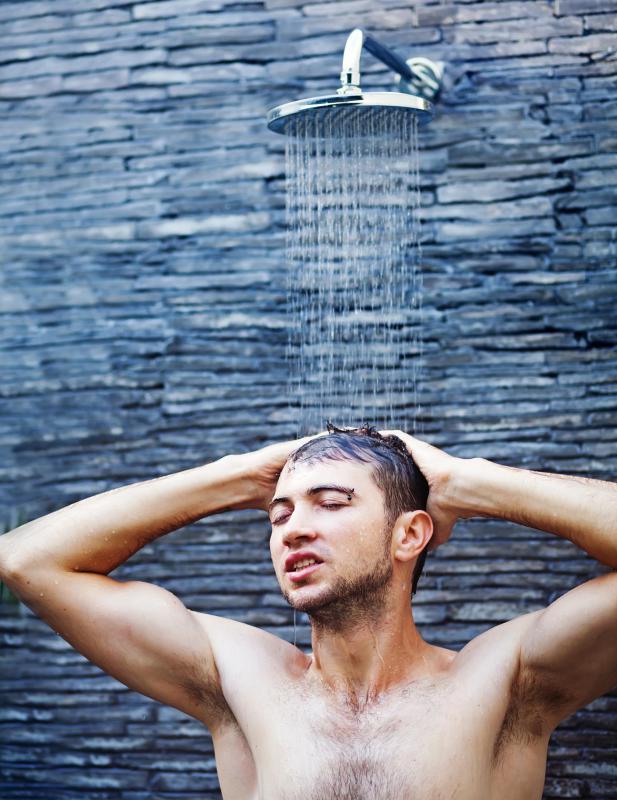At TheHealthBoard, we're committed to delivering accurate, trustworthy information. Our expert-authored content is rigorously fact-checked and sourced from credible authorities. Discover how we uphold the highest standards in providing you with reliable knowledge.
What Is a Contrast Shower?
A contrast shower is a form of hydrotherapy during which the flow of water is cycled between hot water and cold water three to five times. Typically, during this variable temperature shower, a cycle starts by running the hot water over the body for a period of about three minutes. The temperature is then dramatically lowered for one minute, and then the temperature is increased to complete the cycle. The hot water, during a contrast shower cycle, relaxes and opens the blood vessels while the cold water diverts the blood to internal organs. Contrast showers are used to mitigate the impact of strenuous workouts on the body, detoxify, and enhance the function of internal organs. This form of hydrotherapy is not recommended for pregnant women and people suffering from asthma or heart disease.
During a contrast shower, hot water is run over the body for a period of about three minutes. Exposure to the hot water opens the blood vessels, flushing the body with blood. The water temperature is then dramatically decreased to a cold temperature that is barely tolerable. Cold water is run over the body for 30 seconds to one minute, during which the frigid water drives the blood inward to warm and protect the internal organs from the cold. After a short time, the temperature of the shower water is increased to as warm as the skin can bear and the body is warmed for three minutes.

The temperature cycle is usually done three to five times during this form of water therapy. A patient using this hydrotherapy will gradually be able to tolerate great differences in temperature, which may increase the benefits. This type of shower should be discontinued if a patient begins to feel dizzy or nauseous.
Variable temperature showers are most often used by athletes and body builders after a strenuous workout. A contrast shower is often touted to relieve delayed onset muscle soreness or the muscular aches that can occur after arduous exercise. These showers may manage soreness by decreasing the concentration of lactate in the blood, which contributes to muscle aches. In addition, flushing of the blood vessels may also help to reduce the joint and muscle inflammation that is often a side effect of a demanding exercise routine.

A contrast shower may also be prescribed to detoxify the body or to boost the functions of the internal organs. Cleansing of the body may be brought about by the cycle of dilation and constriction of the blood vessels, which may force the release of toxins bound up in the blood. Sudden cold exposure, which drives the blood into the core of the body, is most likely the reason for the reported amplification of internal organ function after variable temperature showers.
AS FEATURED ON:
AS FEATURED ON:













Discuss this Article
Post your comments